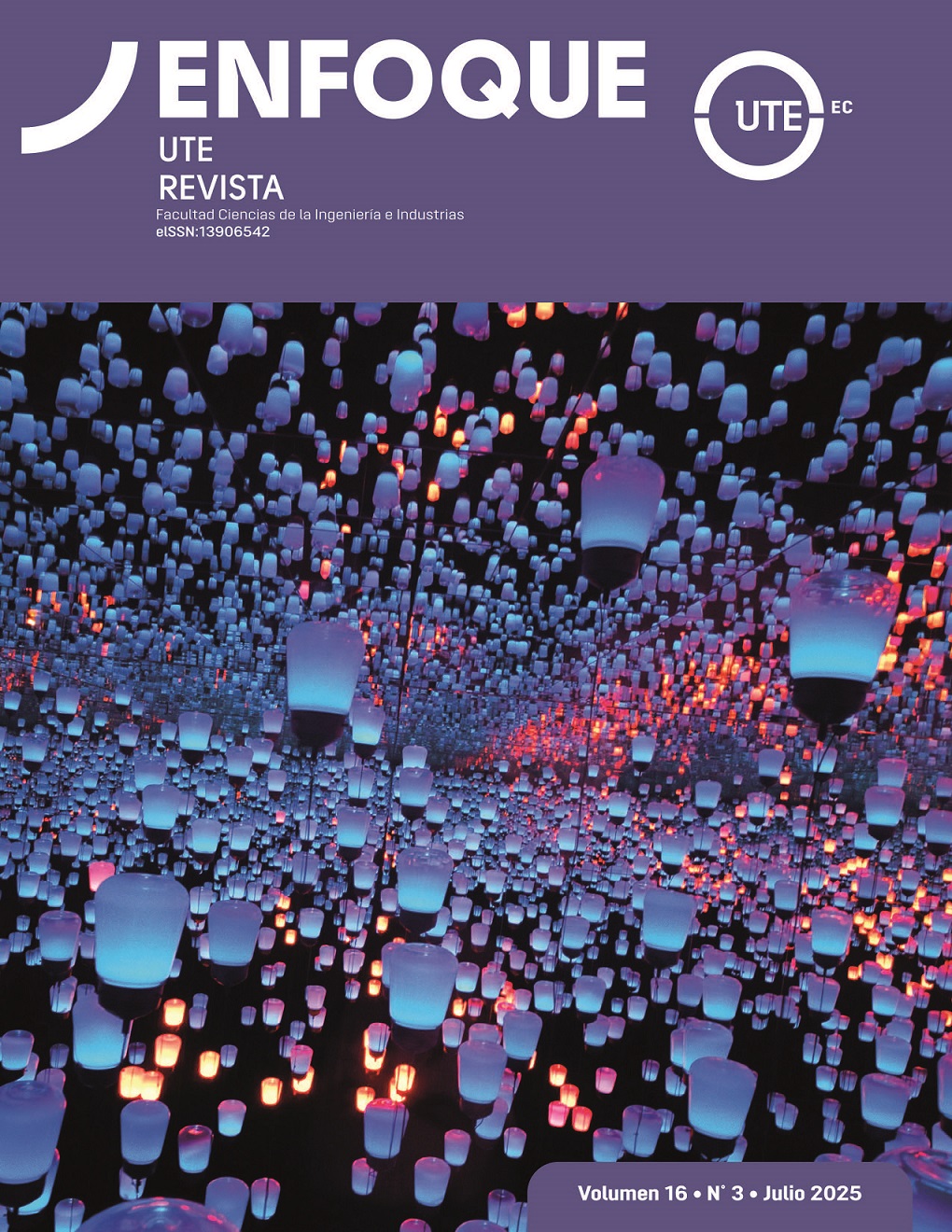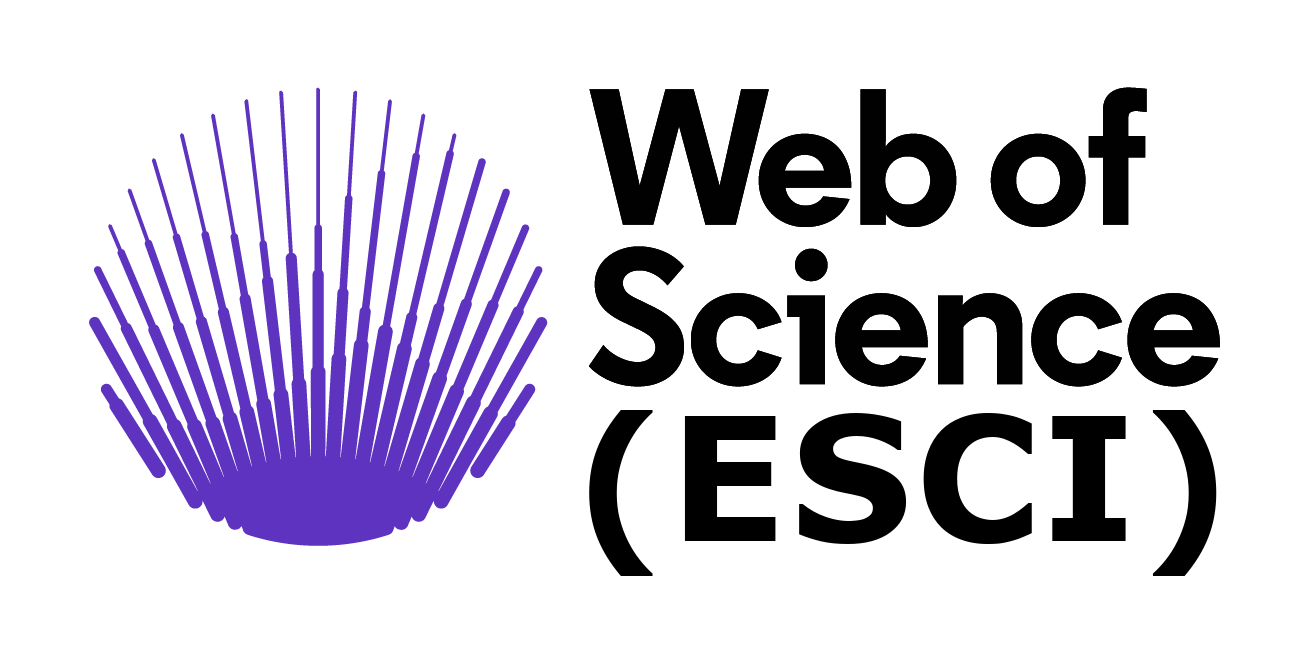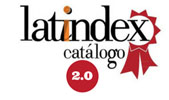Development and physical-chemical and microbiological characterization of a yogurt-like product, lupine (Lupinus mutabilis Sweet) -based
DOI:
https://doi.org/10.29019/enfoqueute.1164Keywords:
milk-like; yogurt-like; Arracacia xanthorrhiza; Lupinus mutabilis Sweet; lactic acid bacteria.Abstract
In view of the growing demand for alternatives to animal products, this study presents the development and physicochemical, microbiological and sensory characterization of a yogurt-type product based on lupine milk (Lupinus mutabilis) and starch from arracacha (Arracacia xanthorrhiza). Three versions of the product were formulated with different concentrations of starch, evaluating its proximal composition, polyphenol content, rheological behavior, microbiological profile and sensory acceptance. The results showed that the incorporation of starch did not significantly affect the basic nutritional composition, maintaining an adequate protein and fiber profile. The formulation with 3% starch (T3) presented higher viscosity, rheological stability and sensory acceptability, standing out in attributes such as flavor, texture and appearance. In addition, the pseudoplastic behavior observed suggests a favorable texture for the consumer. At the microbiological level, all formulations met safety standards, showing an adequate presence of lactic acid bacteria with probiotic potential. Therefore, this work not only highlights the potential of lupin as a base for functional fermented products but also highlights the importance of arracacha starch as a natural stabilizer. The findings open new perspectives for the development of innovative, sustainable and nutritionally balanced plant-based foods, with projection towards the food industry and the growing market of vegan and food intolerant consumers.
Downloads
References
[1] M. Soumya, A. Suresh, R. Parameswaran and K. M. Nampoothiri, “Physico-chemical and organoleptic evaluation of probiotic plant-milk yogurt-type beverages as a functional alternative to dairy yogurts,” Biocatal Agric Biotechnol, vol. 57, no. 103060, p. 103060, 2024. https://doi.org/10.1016/J.BCAB.2024.103060
[2] V. R. Narala, M. A. Jugbarde, I. Orlovs and M. Masin, “Inulin as a prebiotic for the growth of vegan yoghurt culture in pea protein-based vegan yoghurt-ice cream, while improving the textural properties,” Applied Food Research, vol. 2, no. 2, p. 100136, 2022. https://doi.org/10.1016/J.AFRES.2022.100136
[3] D. Dhakal, G. Kumar, L. Devkota, D. Subedi and S. Dhital, “The choice of probiotics affects the rheological, structural, and sensory attributes of lupin-oat-based yoghurt,” Food Hydrocoll, vol. 156, no. 5, p. 110353, 2024. https://doi.org/10.1016/J.FOODHYD.2024.110353
[4] D. Dhakal, T. Younas, R. Bhusal, L. Devkota, L. Li, B. Zhang and S. Dhital, “The effect of probiotic strains on the proteolytic activity and peptide profiles of lupin oat-based yoghurt,” Food Hydrocoll, vol. 149, no. 1, p. 109570, 2024. https://doi.org/10.1016/J.FOODHYD.2023.109570
[5] S. A. Ahmed, W. A. Helmy and O. A. Ibrahim, “Evaluation of lupine seeds (Lupinus albus L.) neutral extract as a texture improver in low-fat yogurt production,” Int J Biol Macromol, vol. 263, no. 13, p. 130303, 2024. https://doi.org/10.1016/J.IJBIOMAC.2024.130303
[6] L. Hanley, S. Dobson and A. G. Marangoni, “Legume milk-based yogurt mimetics structured using glucono-δ-lactone,” Food Research International, vol. 184, no. 10, p. 114259, 2024. https://doi.org/10.1016/J.FOODRES.2024.114259
[7] J. Ran, S. Pang, H. Li, R. Zhao, Y. Li and M. Yang, “Gel properties of mung bean protein sodium caseinate hybrid yogurt: Physicochemical properties, microstructure, and intermolecular interactions,” Food Chem X, vol. 24, no. 77, p. 101977, 2024. https://doi.org/10.1016/J.FOCHX.2024.101977
[8] T. Pantoa, K. Wadeesirisak, S. Saah and P. Saithong, “In vitro protein digestibility and bioactive activities of yogurt from black soybean (Glycine max L.) milk,” Future Foods, vol. 11, no. 36, p. 100636, 2025. https://doi.org/10.1016/J.FUFO.2025.100636
[9] Y. Ma, S. H. Lee, M. Guk, S. Cho and Y. Kim, “Enhancing soy yogurt texture and functionality with mealworm protein,” Journal of Food Composition and Analysis, vol. 141, no. 10, p. 107337, 2025. https://doi.org/10.1016/J.JFCA.2025.107337
[10] M. Caponio et al., “Development, optimization and integrated characterization of rice-based yogurt alternatives enriched with roasted and non-roasted sprouted barley flour,” Curr Res Food Sci, vol. 10, no. 1, p. 101059, 2025. https://doi.org/10.1016/J.CRFS.2025.101059
[11] X. Wang, L. Wang, X. Wei, C. Xu, G. Cavender, W. Lin and S. Sun, “Invited review: Advances in yogurt development Microbiological safety, quality, functionality, sensory evaluation, and consumer perceptions across different dairy and plant-based alternative sources,” J Dairy Sci, vol. 108, no. 1, pp. 33-58, 2025. https://doi.org/10.3168/JDS.2024-25322
[12] A. Zeinatulina, K. Tanilas, K. Ehala-Aleksejev, E. Viiard and T. Kriščiunaite, “Digestibility of protein and estimated bioavailability of mineral compounds in plant-based yoghurt alternatives,” Future Foods, vol. 11, no. 1, p. 100545, 2025. https://doi.org/10.3168/JDS.2024-2532210.1016/J.FUFO.2025.100545
[13] N. C. Jamanca, R. W. Ocrospoma, Y. M. Eguilas, R. A. Padilla and R. J. Silva, “Food grain quality: Analysis of physical, biometric, and colorimetric properties to promote consumption,” Heliyon, vol. 10, no. 7, p. e29234, 2024. https://doi.org/10.1016/J.HELIYON.2024.E29234
[14] A. Gulisano, S. Alves, J. N. Martins and L. M. Trindade, “Genetics and Breeding of Lupinus mutabilis: An Emerging Protein Crop,” Front Plant Sci, vol. 10, no. 1, p. 1385, 2019. https://doi.org/ 10.3389/FPLS.2019.01385
[15] FAO, “Simposio Regional del chocho o tarwi (Lupinus mutabilis),” Organización de las Naciones Unidas para la Alimentación y la Agricultura, 2016. Accessed: Jun. 27, 2024. [Online]. Available: https://www.fao.org/ecuador/noticias/detail-events/en/c/453499/
[16] L. Devkota, K. Kyriakopoulou, R. Bergia and S. Dhital, “Structural and Thermal Characterization of Protein Isolates from Australian Lupin Varieties as Affected by Processing Conditions,” Foods, vol. 12, no. 5, p. 908, 2023. https://doi.org/10.3390/FOODS12050908/S1
[17] J. Yang and L. M. C. Sagis, “Interfacial behavior of plant proteins — novel sources and extraction methods,” Curr Opin Colloid Interface Sci, vol. 56, no. 1, p. 101499, 2021. https://doi.org/10.1016/J.COCIS.2021.101499
[18] A. Hickisch, R. Beer, R. F. Vogel and S. Toelstede, “Influence of lupin-based milk alternative heat treatment and exopolysaccharide-producing lactic acid bacteria on the physical characteristics of lupin-based yogurt alternatives,” Food Research International, vol. 84, no. 1, pp. 180-188, 2016. https://doi.org/10.1016/J.FOODRES.2016.03.037
[19] E. Villacrés, P. Cueva, M. Díaz, and C. M. Rosell, “Replacing Wheat Flour with Debittered and Fermented Lupin: Effects on Bread’s Physical and Nutritional Features,” Plant Foods for Human Nutrition, vol. 75, no. 4, pp. 569-575, 2020. https://doi.org/ 10.1007/S11130-020-00844-W/METRICS
[20] G. E. Sedó Molina, R. Shetty, C. Jacobsen, L. Duedahl-Olesen, E. B. Hansen and C. H. Bang-Berthelsen, “Synergistic effect of the coculture of Leuconostoc pseudomesenteroides and Lactococcus lactis, isolated from honeybees, on the generation of plant-based dairy alternatives based on soy, pea, oat, and potato drinks,” Food Microbiol, vol. 118, no. 3, pp. 104427, 2024. https://doi.org/10.1016/J.FM.2023.104427
[21] AOAC, “Official methods of analysis,” Current througn, no. 3, pp. 4-5, 2005. Accessed: Mar. 17, 2025. Available: https://www.academia.edu/43245633/Of_fi_cial_Methods_of_Anal_y_sis_of_AOAC_IN_TER_NA_TIONAL_18th_Edi_tion_2005
[22] Y. Deng, Y. Wang, G. Zhong and X. Yu, “Simultaneous quantitative analysis of protein, carbohydrate and fat in nutritionally complete formulas of medical foods by near-infrared spectroscopy,” Infrared Phys Technol, vol. 93, no. 2, pp. 124-129, 2018. https://doi.org/10.1016/J.INFRARED.2018.07.027
[23] M. Quiñones, M. Miguel and A. Aleixandre, “Los polifenoles, compuestos de origen natural con efectos saludables sobre el sistema cardiovascular,” Nutr Hosp, vol. 27, no. 1, pp. 76-89, 2012. Available: https://scielo.isciii.es/scielo.php?script=sci_abstract&pid=S0212-16112012000100009
[24] AOAC, “Official Methods of Analysis,” Association of Official Analytical, no. 15, 1990, Accessed: Mar. 17, 2025. [Online]. Available: https://law.resource.org/pub/us/cfr/ibr/002/aoac.methods.1.1990.pdf
[25] M. J. G. Salgado et al., “Impact of fiber-rich donkey milk yogurt on apparent viscosity and sensory acceptance,” LWT, vol. 145, no. 1, pp. 111494, 2021. https://doi.org/10.1016/J.LWT.2021.111494
[26] I. Ocaña, “Caracterización fisicoquímica, nutricional y reológica de cultivos andinos infrautilizados” [Tesis de Grado, Universidad Técnica de Ambato,” Universidad Técnica de Ambato, Tungurahua, Ambato, 2019.
[27] INEN 2395, “Leche Fermentadas,” Norma Técnica Ecuatoriana , no. 07, 2011, Accessed: Jan. 23, 2025. [Online]. Available: https://es.scribd.com/document/409014254/Leche-Yogurt
[28] M. Cuadros, “Atributos Sensoriales,” SCRIBD, 2018, Accessed: Apr. 20, 2022. [Online]. Available: https://es.scribd.com/document/160682506/ATRIBUTOS-SENSORIALES#fullscreen&from_embed
[29] L. Taramona-Ruiz, V. Quispe-Wong and M. Huatuco-Lozano, “Evaluación sensorial de un salami con extracto de un colorante en base de Ayrampo (Opuntia soehrensii),” Revista de Investigaciones de la Universidad Le Cordon Bleu, vol. 11, no. 1, pp. 17-29, 2024. https://doi.org/10.36955/RIULCB.2024V11N1.002
[30] F. Afiati, G. Priadi and F. Setiyoningrum, “The improvement of functional food in yogurt enriched with purple sweet potato (Ipomea batatas var. Ayamurasaki),” J Indones Trop Anim Agric, vol. 43, no. 2, pp. 159-168, 2018. https://doi.org/10.14710/JITAA.43.2.159-168
[31] T. Pramanik, M. A. R. Mazumder, J. F. Jany, S. I. Akash, A. Rahman and M. K. H. Bhuiyan, “Functional yogurt: An approach to fortify yogurt by polyphenols extracted from Bengal currant,” Applied Food Research, vol. 5, no. 1, pp. 100715, 2025. https://doi.org/10.1016/J.AFRES.2025.100715
[32] Y. Feng, L. Niu, D. Li, Z. Zeng, C. Sun, and J. Xiao, “Effect of calcium alginate/collagen hydrolysates beads encapsulating high-content tea polyphenols on quality characteristics of set yogurt during cold storage,” LWT, vol. 191, no. 1, pp. 115608, 2024. https://doi.org/10.1016/J.LWT.2023.115608.
[33] R. Qadir, W. N. A. Wan Mohamad Nasir, A. B. Azmi, S. Fatima, N. Mehmood, and A. S. Meor Hussin, “An insight into plant-based yogurts: Physicochemical, organoleptic properties and functional food aspects,” Journal of Food Composition and Analysis, vol. 143, no. 1, p. 107578, 2025. https://doi.org/10.1016/J.JFCA.2025.107578.
[34] S. Priatni, A. F. Devi, L. B. S. Kardono, and V. Jayasena, “QUALITY AND SENSORY EVALUATIONS OF TEMPE PREPARED FROM VARIOUS PARTICLE SIZES OF LUPIN BEANS [Evaluasi Sensorik dan Kualitas Tempe dari Kacang Lupin Berbagai Ukuran Partikel],” Jurnal Teknologi dan Industri Pangan, vol. 24, no. 2, pp. 209–209, 2013. https://doi.org/10.6066/JTIP.2013.24.2.209.
[35] E. Villacrés and C. M. Rosell, “Kinetics of solid-state fermentation of lupin with Rhizophus oligosporus based on nitrogen compounds balance,” Food Biosci, vol. 42, no.1, pp. 101118, 2021. https://doi.org/10.1016/J.FBIO.2021.101118.
[36] A. Chawafambira and T. Z. Jombo, “The effect of herbal Lippia javanica extracts on the bioactive content, functional properties, and sensorial profile of biofortified-orange maize based fermented maheu,” Applied Food Research, vol. 4, no. 1, pp. 100367, 2024. https://doi.org/10.1016/J.AFRES.2023.100367.
[37] V. Vicent, “Influence of banana powder on proximate composition, physicochemical and rheological properties of soy yoghurt,” Applied Food Research, vol. 4, no. 2, pp. 100450, 2024. https://doi.org/10.1016/J.AFRES.2024.100450.
[38] I. Bourouis, D. J. McClements, C. Chen, H. Li, Z. Pang, and X. Liu, “Formulations and evaluations of structural and physico-chemical properties of soy yogurts: Effect of incorporating soy protein isolate/chitosan complexed microgels,” LWT, vol. 206, no. 1, pp. 116569, 2024. https://doi.org/10.1016/J.LWT.2024.116569
[39] Z. Pang, R. Xu, T. Luo, X. Che, N. Bansal and X. Liu, “Physiochemical properties of modified starch under yogurt manufacturing conditions and its relation to the properties of yogurt,” J Food Eng, vol. 245, no1, pp. 11-17, 2019. https://doi.org/10.1016/J.JFOODENG.2018.10.003
[40] R. Dong et al., “Enrichment of yogurt with carrot soluble dietary fiber prepared by three physical modified treatments: Microstructure, rheology and storage stability,” Innovative Food Science & Emerging Technologies, vol. 75, pp. 102901, 2022. https://doi.org/ 10.1016/J.IFSET.2021.102901
[41] J. Arriaga and J. Gonzalo, “Control de calidad fisicoquímica, microbiológica y probiótica de yogurt artesanal de mercados de los distritos de Santiago y Cusco, 2023,” Universidad Nacional San Antonio, 2024. Accessed: Feb. 06, 2025. [Online]. Available: https://repositorio.unsaac.edu.pe/handle/20.500.12918/8521
[42] K. Poma Zanabria and F. Y. Rojas Calderón, “Actividad antibacteriana in vitro del extracto etanólico de semillas de Lupinus mutabilis sweet (Tarwi) frente A Escherichia Coli ATCC 25922,” Universidad María Auxiliadora, 2023. Accessed: Feb. 21, 2025. [Online]. Available: https://repositorio.uma.edu.pe/handle/20.500.12970/1665
[43] M. Cerna, “Uso de bebidas vegetales de Chocho (Lupinus mutabilis), Garbanzo (Cicer arietinum) y Amaranto (Amaranthus) como sustitución de la leche de vaca en yogurt.,” Universidad Técnica de Babahoyo, 2024. Accessed: Feb. 21, 2025. [Online]. Available: http://dspace.utb.edu.ec/handle/49000/16060
[44] J. Zhang, A. Perez-Gavilan and A. C. Neves, “Fortification of dairy-free yoghurt with bioactive protein from solid-state fermented brewers’ spent grain,” Applied Food Research, vol. 5, no. 1, pp. 100833, 2025. https://doi.org/10.1016/J.AFRES.2025.100833
[45] E. Villacrés, M. B. Quelal, X. Jácome, G. Cueva and C. M. Rosell, “Effect of debittering and solid-state fermentation processes on the nutritional content of lupine (Lupinus mutabilis Sweet),” Int J Food Sci Technol, vol. 55, no. 6, pp. 2589-2598, 2020. https://doi.org/10.1111/IJFS.14512
Published
Issue
Section
License
Copyright (c) 2025 Monserrath Vasquez, Elena , María Morales-Padilla , Josué Cruz Vasquez

This work is licensed under a Creative Commons Attribution 4.0 International License.
The authors retain all copyrights ©.
- The authors retain their trademark and patent rights, as well as rights to any process or procedure described in the article.
- The authors retain the right to share, copy, distribute, perform, and publicly communicate the article published in Enfoque UTE (for example, post it in an institutional repository or publish it in a book), provided that acknowledgment of its initial publication in Enfoque UTE is given.
- The authors retain the right to publish their work at a later date, to use the article or any part of it (for example, a compilation of their work, lecture notes, a thesis, or for a book), provided that they indicate the source of publication (authors of the work, journal, volume, issue, and date).
























